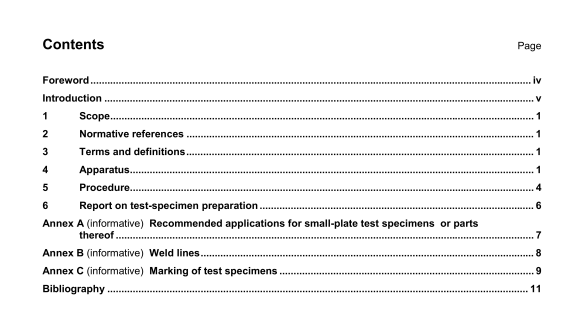ISO 01268-11 pdf download – Fibre-reinforced plastics – Methods of producing test plates – Part 11: Injection moulding of BMC and other long-fibre moulding compounds一Small plates.
I) The heating system for the mould plates shall be designed so that under operating conditions, the difference in temperature between any point on the surface of a cavity and either plate is less than 3 °C.
g) Interchangeable cavity plates and gate inserts are recommended to permit rapid changes In production from one type of test specimen to another, Such changes are facilitated by using shot capacities lj which are as similar as possible.
h) Figure 1 shows the position of a pressure sensor P within the cavity, which is mandatory for the measurement of moulding shrinkage only (see ISO 2577) Such a sensor may be useful, however, Ni controlling the irNection period with any ISO motdd Isee ISO 1268-10:2006. Subctause 4.1 4, item k)J. The pressure sensor shall be flush with the cavity surface in order to avoid interference of the material flowS
i) To ensure that cavity plates are interchangeable between different ISO moulds, it is important to note the constructional details given in ISO 1268-10:2005. Subclause 4.1.4. item I), c particular that the width of the mould plates may be affected by the minimr distance required between the connection points for the heating channels
j) To m*e it easer to check that all the specimens from a mould are identical, It Is recommended that the individual cavities be marked, but outside the test area of the specimen This can be done very simply by engraving suitable symbols on the heeds of the ejector pins, thus avoiding any damage to the surface of the cavity plate Another option Is shown in Annex C.
k) Surface imperfections can influence the results, especially those of mechanical tests. Therefore, where appropriate, the surfaces of the mould cavities shaM be highly poleshed The direction of polishing shall correspond to the direction in which the test specimen will be placed under load when it is tested,
NOTE I The height and length of the gate sfrongly influence the process of csswig of the plasticized matenal as it flows into the cavity, and hence the mouflng shrinkage (see ISO 2577). The *nensions of the gate are therefore defined with tight toierances.
NOTE 2 Gates whii are severely liiwted ii height have a great Wifliarice on the orientation of the niatenal within the cavity, even at large distances from the gate- The change in height at the gate has therefore been fixed at a value which facditates subsequent measurement of the nnilding shr**age (see ISO 2577).
NOTE 3 Separating the test specznens from the runner has to be done immediately after removal from the mould cavity, Otherwise, the plates will be irreversibly distorted due 10 the fact that the shrinkage of the runner and gale is different from that of the plate.
NOTE 4 The distance tc between the bnes along wtilch the test specimens are cut from the runners is given by = 2(bo + + t) (see Figure 2) Taking this distance as 80 ova gives the advantage that the same cutting device can be
used to cut 80mm – 10mm x 4 mm bars from the central sections of multipurpose test specimens (see ISO 1268-10:2005. Subdause4 1.3 and Subciause4.1 4, item 1)1.
4.2 Injection-mouldIng machine
For the reproducible preparation of test specimens capable of giving comparable results, only reciprocating- screw injection-moulding machines equipped with all the necessary devices for the control of the moulding conditions shall be used.
The minimum mould-lociting force FM for type Dl and type D2 ISO moulds Is given by FM 11 000 x Pmax x iO-3, i,e 880 kN for a maximum pressure on the material of 80 MPa,
5 Procedure
5.1 Conditioning of material
Pnor to moulding, condition the moulding compound as required in the relevant material standard or, in the absence of such information, as recommended by the manufacturer.
ISO 01268-11 pdf download – Fibre-reinforced plastics – Methods of producing test plates – Part 11: Injection moulding of BMC and other long-fibre moulding compounds一Small plates
